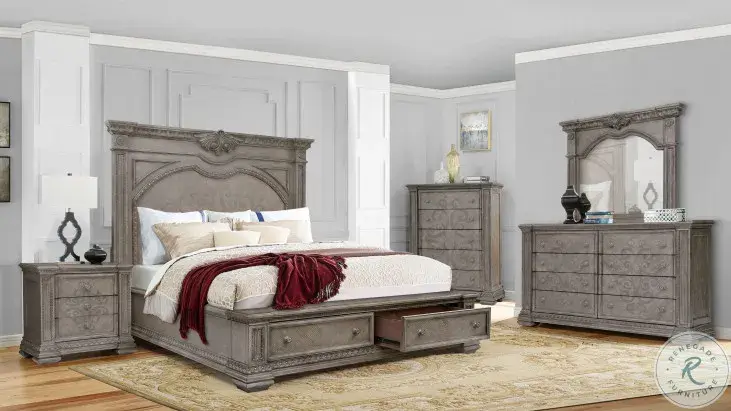Traditional living rooms are spaces that reflect the classic and timeless elements of interior design, such as symmetry, balance, harmony, and elegance. They often feature warm colors, rich fabrics, wood furniture, and antique accents. Traditional living rooms are cozy, comfortable, and inviting, while also being formal and sophisticated.
Characteristics of Traditional Living Rooms
Traditional living rooms have some common characteristics that distinguish them from other styles, such as modern, contemporary, or eclectic. Some of these characteristics are:
Symmetry: Traditional living rooms are based on the principle of symmetry, which means that the furniture, accessories, and artwork are arranged in a balanced and proportional way. For example, a traditional living room may have a sofa flanked by two matching armchairs, a coffee table in the center, and a fireplace with a mirror or a painting above it. Symmetry creates a sense of order and harmony in the space.
Balance: Balance is another key aspect of traditional living rooms, which means that the visual weight of the objects in the room is evenly distributed. For example, a traditional living room may have a large rug that anchors the seating area, a pair of lamps that balance the fireplace, and a mix of small and large accessories that create interest and contrast. Balance helps to avoid a cluttered or chaotic look in the room.
Harmony: Harmony is the result of symmetry and balance, which means that the elements in the room work well together and create a cohesive and pleasing whole. For example, a traditional living room may have a color scheme that is based on warm and neutral tones, such as beige, cream, brown, gold, or burgundy. The fabrics, textures, and patterns may also complement each other, such as silk, velvet, damask, or floral. Harmony helps to create a comfortable and relaxing atmosphere in the room.
Elegance: Elegance is the quality that gives traditional living rooms a sense of refinement and sophistication, which means that the elements in the room are chosen with care and attention to detail. For example, a traditional living room may have furniture that is made of solid wood, such as mahogany, cherry, or walnut, with carved or curved details. The accessories may also be of high quality, such as crystal, porcelain, or silver. Elegance helps to create a formal and dignified impression in the room.
Examples of Traditional Living Rooms
To illustrate the characteristics of traditional living rooms, here are some examples of how they can look like:
- Classic Traditional: This style is the most faithful to the historical and cultural origins of traditional design, which can be traced back to the 18th and 19th centuries in Europe and America. A classic traditional living room may have furniture that is inspired by the French, English, or American colonial styles, such as Louis XVI, Chippendale, or Queen Anne. The colors may be muted and soft, such as pastels, creams, or grays. The fabrics may be floral, striped, or toile. The accessories may include paintings, books, candles, or vases.
- Transitional Traditional: This style is a blend of traditional and contemporary elements, which creates a balance between the old and the new. A transitional traditional living room may have furniture that is sleek and simple, but with some traditional details, such as tufted, rolled, or winged. The colors may be bold and bright, such as red, blue, or green. The fabrics may be geometric, abstract, or solid. The accessories may include pillows, throws, or lamps.
- Rustic Traditional: This style is a variation of traditional design that incorporates natural and organic elements, such as wood, stone, or metal. A rustic traditional living room may have furniture that is rustic and rugged, but with some elegant touches, such as leather, nailhead, or brass. The colors may be earthy and warm, such as brown, tan, or orange. The fabrics may be plaid, checkered, or animal print. The accessories may include baskets, antlers, or plants.
Benefits of Traditional Living Rooms
Traditional living rooms have some benefits that make them appealing and popular among homeowners, such as:
- Versatility: Traditional living rooms are versatile and adaptable, which means that they can suit different tastes, preferences, and needs. For example, a traditional living room can be customized and personalized by adding or changing the colors, fabrics, accessories, or artwork. A traditional living room can also be mixed and matched with other styles, such as modern, contemporary, or eclectic, to create a unique and interesting look.
- Timelessness: Traditional living rooms are timeless and enduring, which means that they do not go out of fashion or become outdated. For example, a traditional living room can be enjoyed and appreciated for years or even generations, without losing its charm or value. A traditional living room can also be updated and refreshed by adding or changing some elements, such as rugs, curtains, or lighting, to keep up with the trends or seasons.
- Comfort: Traditional living rooms are comfortable and inviting, which means that they provide a cozy and relaxing space for the homeowners and their guests. For example, a traditional living room can be furnished and decorated with soft and plush materials, such as cushions, blankets, or carpets, to create a warm and snug feeling. A traditional living room can also be arranged and organized with ample and convenient seating, such as sofas, chairs, or ottomans, to create a welcoming and sociable environment.
Conclusion
Traditional living rooms are spaces that reflect the classic and timeless elements of interior design, such as symmetry, balance, harmony, and elegance. They often feature warm colors, rich fabrics, wood furniture, and antique accents. Traditional living rooms are cozy, comfortable, and inviting, while also being formal and sophisticated. They have some benefits that make them appealing and popular among homeowners, such as versatility, timelessness, and comfort. Traditional living rooms are a great choice for anyone who wants to create a space that is elegant, refined, and classic.


